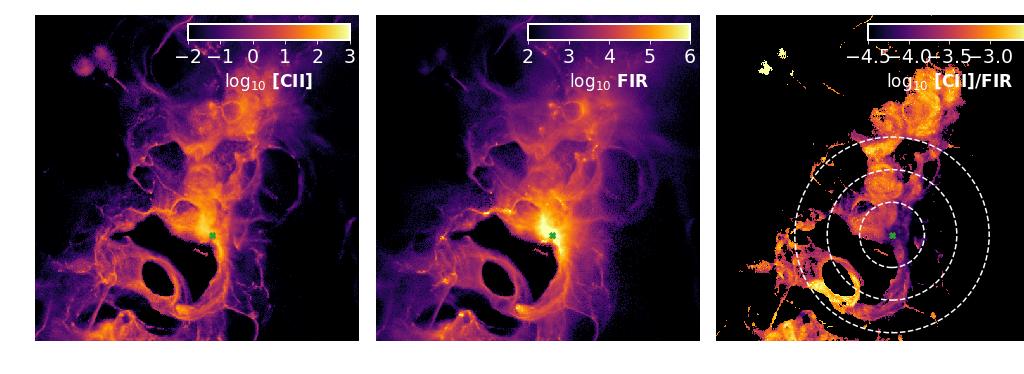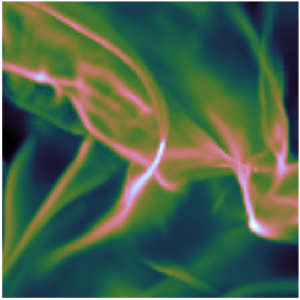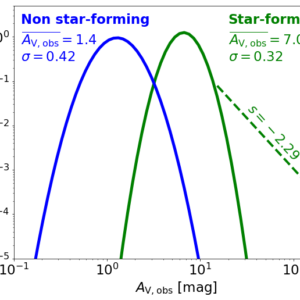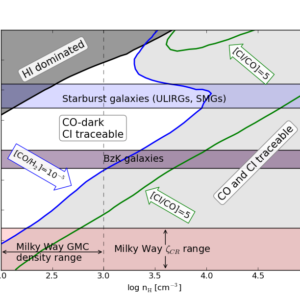
The line of ionized carbon at 158μm, denoted as [CII], is one of the brightest lines originating from star-forming galaxies. Under typical environmental conditions of the interstellar medium (ISM), the [CII] emission line is a result of the interaction between the ISM gas and far-UV (FUV) photons. In general, the emission of [CII] represents approximately 1/1000 of the total far-infrared (FIR) continuum emission. Furthermore, it is also found to be associated with the outer shells of molecular clouds, where star-formation takes place. Thus, [CII] plays a very important role in the photodissociation regions as a coolant, particularly at low visual extinctions.
The luminosity ratio of [CII]/FIR is observed to decrease with increasing infrared luminosity. The origin of the so-called “[CII]-deficit” is still being investigated despite numerous efforts proposing a variety of mechanisms behind it. These suggestions include optically thick [CII] emission in large columns of dust, conversion of singly (C+) to doubly (C++) ionized carbon, and fine-structure lines overcoming [CII] as coolants.
Using snapshots of a hydrodynamical calculations simulating a dwarf galaxy merger, I studied how the [CII] and FIR emit at different stages during the galaxy collision. During this collision, massive star clusters are formed, emitting vast amounts of radiation. This increases both the [CII] and the FIR luminosity. However, when exploring the [CII]/FIR ratio, I have found that this ratio decreases considerably in the vicinity of the massive star cluster formation site. My team and I have proposed that this [CII]-deficit originates from thermal saturation effects in which the [CII] ion simply cannot emit more radiation because the very strong FUV intensities have maxed out its capabilities. At the same time, these FUV photons can make the FIR emission (which originates from dust) even higher, leading to a decrease of the [CII]/FIR ratio.
Our simulated correlation of [CII] luminosity with star-formation rate agrees very well with observations and are in excellent agreement with the Dwarf Galaxy Survey database.
![You are currently viewing Origin of the [CII]-deficit](https://thomasbisbas.com/wp-content/uploads/2023/01/deficit.png)


